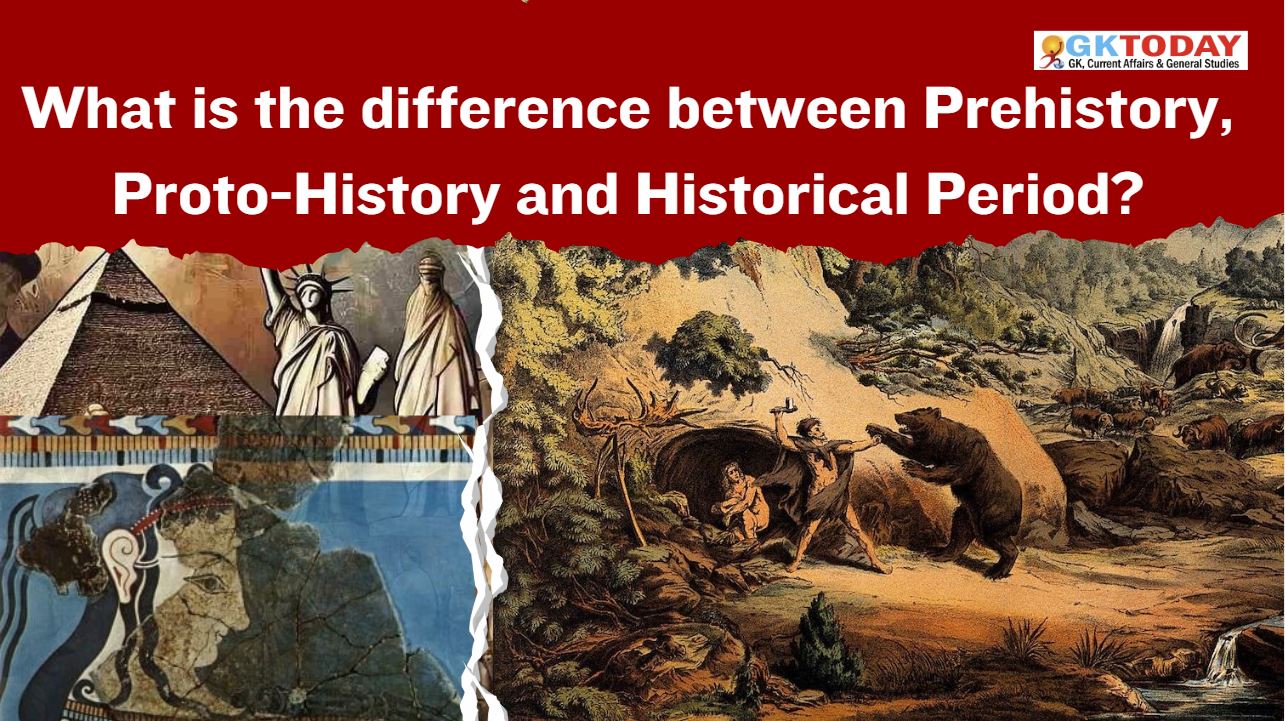What is the difference between Prehistory, Proto-History and Historical Period?
The study of human history is divided into distinct periods based on the availability of written records and the development of advanced civilizations. Prehistory, proto-history, and the historical period are crucial phases that allow us to understand the evolution of human civilization.
Prehistory
Definition: Prehistory refers to the time before written records were kept, and societies relied on oral traditions and archaeological evidence to understand the past.
Characteristics:
- Absence of Written Records: The primary characteristic of prehistory is the absence of written language, making it challenging to ascertain specific events and historical figures.
- Hunter-Gatherer Societies: During prehistory, humans lived as hunter-gatherers, relying on hunting, fishing, and gathering wild plants for sustenance.
- Development of Tools: Prehistoric humans gradually developed tools and technologies, such as stone implements and early forms of fire, which played a crucial role in their survival and progress.
Key Milestone: Invention of Writing
The transition from prehistory to proto-history occurred with the invention of writing, which marked a significant leap forward in human development. Writing allowed civilizations to record information, share knowledge, and preserve historical accounts for future generations.
Proto-History
Definition: Proto-history is an intermediary phase between prehistory and the historical period, characterized by the emergence of written records but incomplete or limited historical documentation.
Characteristics:
- Early Writing Systems: During the proto-historic period, writing systems started to develop, but they might not have been fully standardized or widely used.
- Emergence of Early Civilizations: Proto-history coincides with the rise of early civilizations, such as the ancient Mesopotamian, Egyptian, and Indus Valley civilizations, where written records began to document significant events and administrative matters.
- Oral Traditions and Legends: While written records were emerging, oral traditions and legends continued to play a crucial role in preserving cultural and historical knowledge.
Key Milestone: Development of Cuneiform Script
The development of cuneiform script in ancient Mesopotamia, around 3500 BCE, is a significant milestone in proto-history. It is one of the earliest known writing systems and enabled the recording of administrative, religious, and literary texts.
Historical Period
Definition: The historical period is characterized by abundant and well-documented written records, providing a comprehensive understanding of societies, events, and individuals from the past.
Characteristics:
- Well-Recorded History: The historical period is distinguished by the presence of extensive written records, allowing for a detailed and accurate analysis of past civilizations and historical events.
- Flourishing Civilizations: Major ancient civilizations, such as the Greeks, Romans, Persians, Chinese, and others, thrived during this era, leaving behind rich historical documentation.
- Advancements in Knowledge: The historical period witnessed significant advancements in various fields, including science, philosophy, arts, and governance.
Key Milestone: Invention of the Printing Press
The invention of the printing press by Johannes Gutenberg in the 15th century revolutionized the dissemination of knowledge and marked a crucial turning point in human history. The printing press facilitated the mass production of books and contributed to the spread of ideas, leading to the dissemination of knowledge on an unprecedented scale.







